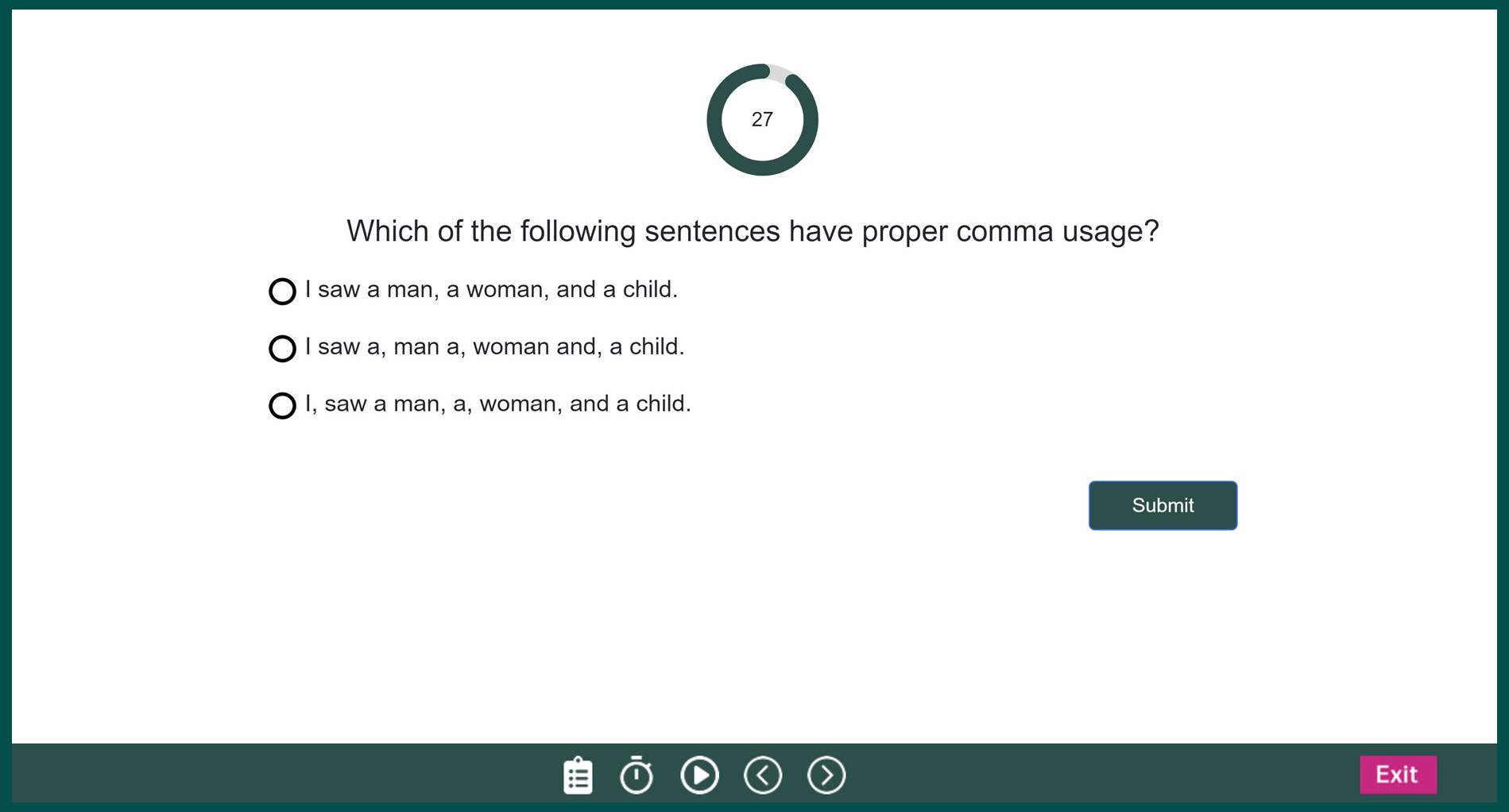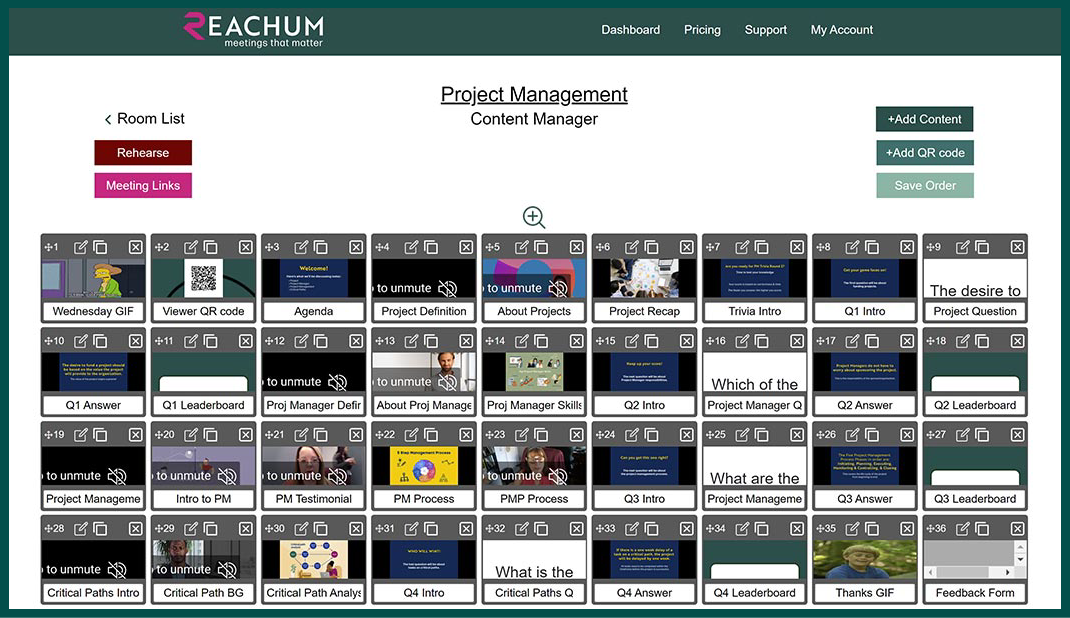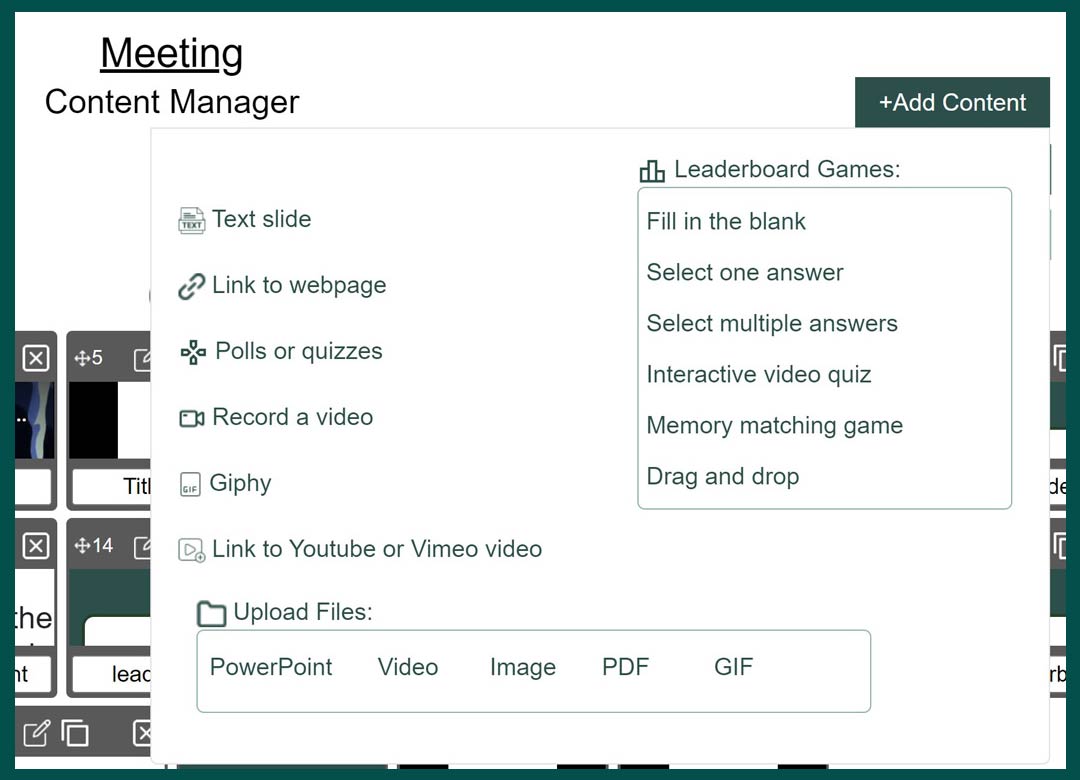by Mya Corcoran
Most teachers do not encourage their students to pull out their cell phones during class, but in Will Fullwood’s classes, having students take out their phones to participate in an interactive quiz is the key to accelerating learning.
Will is a professor at Wake Technical Community College, the largest junior college in North Carolina with 22,000 students. Fullwood teaches transition math and English courses, entry level classes for students returning to college after a break in their education. His students may be veterans looking for an education after completing their service, new immigrants, or people looking to pursue a new career path.
The object of transition courses is to level up students for success in curriculum level classes.
The REACHUM Process in Action
Fullwood uses REACHUM, an interactive teaching platform, to involve students in class materials. Using their cell phones, students scan a QR code being projected on a screen at the front of the room. Will controls what the students see, advancing the images, slides, and activities students see with a single keystroke to his laptop. Students follow along on their phones, responding to assessments and challenges directly.
For example, Fullwood explained in one of his English classes he used REACHUM to give students an assessment on comma usage. He gave students four sentences and had them use their devices to indicate which sentences had proper comma placement and which sentences did not.

After each quiz question, a leaderboard appears showing the highest scoring participants and their cumulative scores on the quiz questions. Fullwood commented that the leaderboard feature encourages engagement and motivates students since they know everyone will be able to see their score on the leaderboard.
Gamified Challenges Encourage Engagement
REACHUM’s gamified challenges not only have led to higher engagement in Fullwood’s classes, but also have given him the ability to evaluate how well his students understand specific concepts. He uses the quizzes as formative assessments and treats his students’ scores as data to determine their levels of understanding and grasp of the material he has taught them. He uses the quizzes “just to see – did they get this [or] did they not get this.” Being able to see his students’ scores instantaneously allows Fullwood to have an immediate idea of whether his students understand what he taught them rather than waiting to give them a test at the end of a chapter, the traditional way of measuring learning progress. Thus, he has a better idea of what concepts he needs to revisit before moving the class on to a new topic.
Besides using REACHUM to give quizzes and assess student knowledge, Fullwood also explains that he uses REACHUM as a way of “hooking the class through activity.” In the beginning of class, Fullwood has used activities he created through REACHUM to get the class engaged and get a conversation going. It’s easy to incorporate various media sources and current events into his lessons, which makes his classes more interesting. Fullwood embeds video clips into his lessons from sources such as YouTube, Khan Academy, and Numberphile. Being that Fullwood is able to quickly and easily embed video clips into REACHUM, rich, engaging content has become a staple of his classes.
Easier Classroom Technology Incorporation
In a recent English class, Fullwood used REACHUM to show students a short video clip, a review of the movie Everything Everywhere All at Once. Near the end of the clip, Fullwood pointed out that the reviewer became flustered, thus making his ideas jumbled. Fullwood challenged his students to take notes on the most important things the man said, then turn those jumbled ideas into an orderly and coherent paragraph.
REACHUM has made incorporating technology into his classroom much easier. One of the classroom challenges has been endless switching back and forth between many browser tabs and programs. His previous difficulties “with using technology in the classroom was that you would have to switch over from this to that…first you open up your PowerPoint, then you’re in Teams, then you’re in like this other app.” With REACHUM, everything he needs is compiled in one platform. He can easily create a presentation with all the website links, images, and slides he will need to refer to while teaching a lesson. Fullwood states, “having it all in one place is game changing.”

Save on Prep Time
REACHUM has not only been easy for Fullwood to incorporate in his classroom, but also a time saver. It has maximized the amount of time students are engaged in his class as well as cutting the time that it takes to prepare a lesson.
“A lot of times I would have creative ideas…but it takes a really long time to develop some of these ideas. REACHUM has shortened that time exponentially.”
– William Fullwood
Furthermore, Fullwood has found it useful that REACHUM allows him to embed course materials he already has, like existing PowerPoints, into his presentation. Fullwood explained that REACHUM is so quick and easy to use that he once was able to make a three-question quiz during class time to assess if his students had picked up on the points he had taught that day.

Project-Based Learning
Fullwood has found REACHUM to be especially useful when it comes to project-based learning. As opposed to assigning a lengthy packet with dense instructions, REACHUM allows Fullwood to walk his students through an assignment step-by-step in what he dubs a “guided project.” He uses REACHUM to create a presentation in which each slide holds just a short piece of instructions. This way, Fullwood can guide his students in small steps rather than overwhelming them with all the project instructions at once.
The ability to compile small pieces of instructions onto slides in a REACHUM presentation and then share those slides to student devices frees up this teacher to move about his room rather than being anchored to the front in lecture mode.
“The teacher doesn’t have to control every aspect of what they do because they can rely on the directions that are projected. This gives me more flexibility.”
– William Fullwood
This way, students can work independently, while Fullwood is available to walk around the classroom and help the students who have questions or need extra support.
Summary
As Fullwood demonstrates in his classrooms, REACHUM has the ability to transform the way teachers teach and the way students learn. From having his students participate in interactive quizzes to incorporating video clips into his lessons, Fullwood has used REACHUM to engage his students and make his classes more interesting.
Instead of defaulting to more traditional teacher-directed teaching methods, REACHUM has allowed Fullwood to capitalize on his creativity, bringing new, innovative teaching methods into his classrooms. Fullwood, who has taught students from ages three to seventy-three throughout his teaching career, sees REACHUM as a valuable tool in all classrooms and for all students no matter their age or grade.
Fullwood summates, “At every level of education, REACHUM can enhance engagement, I think it can deepen discussion, [and] I think it can allow more teacher flexibility and creativity.”
